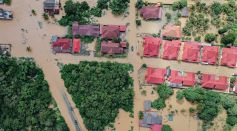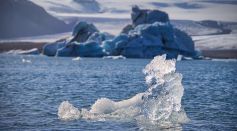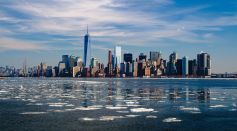Tags: Rising sea levels

Antarctica's Doomsday Glacier: Ocean Water Found To Push Under It, Making It More Vulnerable to Melting Than Previously Thought [STUDY]

US Tsunami-Prone Areas: Map Shows Rising Sea Levels 'Hazard Zones'

Unexpectedly High Methane Emissions Discovered in Wetlands Exposed to Slight Seawater Influx, Challenging Previous Assumptions
Oxygen Depletion, Hydrogen Sulfide Expansion in Ancient Seas May Have Caused One of Earth's Mass Extinction Events

Tuvalu Might Become the First Nation To Be Uploaded to the Metaverse Due to Existential Threat

Scientists Reveal Coastal Cities That Could Sink Faster Due to Floods from Rising Sea Levels and Human-Induced Subsidence

Wind-Powered Skeletal Structures Move Like Living Animals: What Are These Stranbeets For?

Only 16% of Global Coastal Regions Remains Intact; Experts Urge Conservation Efforts ASAP

Global Warming Could Impact Local Coastlines with Rising Sea Levels; Which Countries, Regions Will be Affected?

Climate Central Reveals Shocking Catastrophic Images of Cities Drowning in High Sea Levels

NASA's New Online Tool Opens IPCC Data on Sea Level to Public, Aims To Influence Economic, Public Policy To Favor Environment

Rising Sea Levels Are Sinking Cities and Towns: Map Reveals What the UK Will Look in 2100 if Climate Change Continues

Antarctic Ice Sheet's Rising Sea Levels Could Be 'Countered' by Snowfall Induced Through Warming Ocean of Northern Hemisphere

Sea Level Rise: Moon Causes US Coastal Flooding That May Worsen in the Mid-2030s

Cities Around the World Are Sinking Because of Their Colossal Weight
What Would Happen to Earth If All The Ice Will Melt?
A Researcher Proposed a New Approach to Monitoring the Global Rise of Sea Levels

NASA Sentinel 6 Michael Freilich to Launch in November
Tiny Polynesian Islands May Not Be Threatened by Climate Change After All: New Study Gives Better Perspective
One-fifth of Mangroves in the World Already Perished and Could Be Totally Gone by 2050 Due to Rising Sea Levels
Most Popular

Can the World Run Out of Water? Water Scarcity Science and Climate Impact Explained

Solar Maximum 2026: Inside the Sunspot Cycle and Solar Activity Forecast Astronomers Are Watching

Volcanic Warning Signs: How Magma Movement Reveals Eruption Prediction Clues for Geologists

Could Technology Prevent Natural Disasters? How Disaster Prediction and Early Warning Systems Could Save Lives





